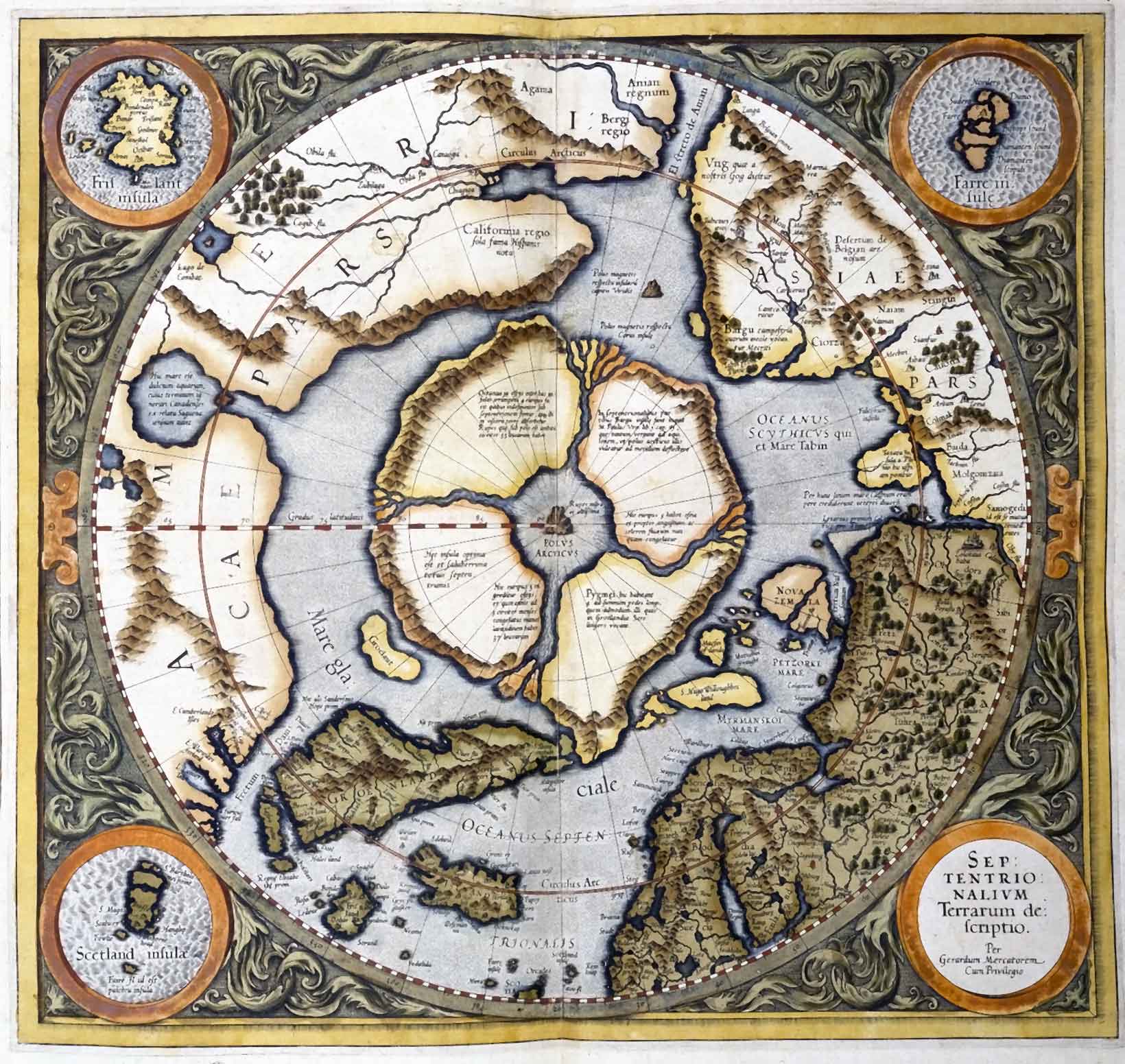What is at the 'top' of the world has fascinated people for a long time. Even before Europeans knew what was to the north they speculated what might be there.

The Mercator map of 1595
The Mercator map was drawn from existing maps, the journeys of English explorers and Mercator’s theories on the location of the magnetic north pole.
There are many different definitions of the Arctic
- The Arctic Circle is the latitude at which the sun does not set at the summer solstice, 66° 33′ N
- The Arctic is the area above the tree line
- The boundary of the Arctic is the line at which the average temperature of the warmest month is 10C (summer isotherm)
- The Arctic is where the warm salty water of the Atlantic and Pacific meet the colder less salty waters of the Artic Ocean
- The Arctic is north of latitude 60°
How to define the Arctic
- Which of the above definitions do you think is the right one?
- How might the effects of climate change alter these definitions?
- Download the Arctic Flora and Fauna: Status and Conservation report to help you with your research.
Boundaries
The map below shows the boundaries that have been used by the Arctic Monitoring and Assessment Programme (AMAP) and the Arctic Human Development Report (AHDR) in developing strategies for Arctic governance.

The AMAP boundary runs through latitude 50°N in North America. If this was the case in Western Europe, Britain would be in the Arctic!
- Why is this not the case? (here’s a clue: look at the map of ocean currents)
Lowest temperature!
Visiting the coldest town in the world | 60 Minutes Australia
Oymyakon – 63.46N 142.79E – claims the record for the lowest temperature recorded in a permanent settlement in the northern hemisphere at -71.2°C in 1926. It has a population of 500 and is sometimes called the northern Pole of Cold.
Verkoyhansk – 67.55N 133.39E – has a population of 1,311. The town holds the Guinness world record for the greatest temperature range on Earth: 105°C.
- What might be the cause of this phenomenon and are these settlements located in the Arctic?
- Oymyakon on YouTube: Find out more about what is like to live in these extreme conditions.